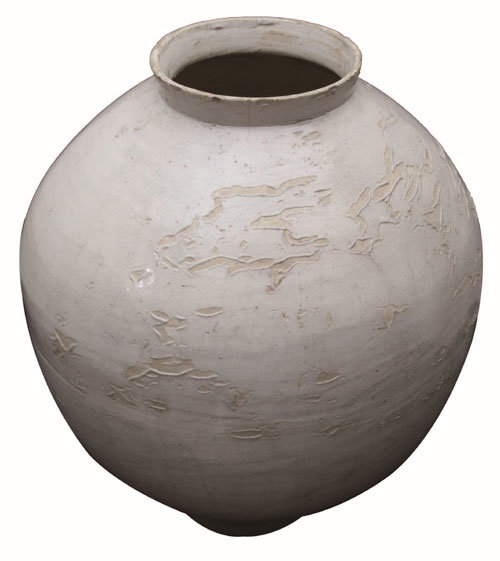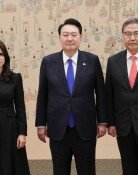Dong-A Auction to present Joseon’s largest moon jar ever next week
Dong-A Auction to present Joseon’s largest moon jar ever next week
Posted June. 04, 2019 07:37,
Updated June. 04, 2019 07:37

The moon jars produced in the late Joseon dynasty have features that are uniquely Korean, which cannot be found in Chinese or Japanese porcelain. Unlike Joseon’s white porcelains, the moon jar stands 40 centimeters tall and boasts a beautiful silhouette with ample feelings to it. Currently, three moon jars have been designated as national treasure.
A moon jar whose size has been confirmed to be the largest has been up for Dong-A Auction. The sixth regular session of Dong-A Auction takes place at 3 p.m. on June 12 at Dong-A Auction Gallery on the18th floor of the Dong-A Ilbo’s Chungjeong-ro building in central Seoul, presents a colorful range of some 200 art pieces.
Most notable among them is a moon jar that is 57 centimeters tall and 49 centimeters wide. The size is overwhelming considering that the height of the three moon jars registered as national treasure are between 44 centimeters and 49 centimeters.
With only 20 to 30 units known to exist, the moon jar is a very rare cultural heritage. The jars were built in a royal porcelain factory and exclusively offered to the royal family and nobles.
A closer look at the moon jar up for the auction suggests its surface is far from smooth. If anything, it is rather rough and even coarse. The secret lies in the drying process of glaze. Once forged, a pottery does not change in shape, so it bears a natural form from the moment it comes out of the kiln. “Even in such an extremely high temperature, the kiln has a subtle amount of moisture in it, and the drying occurs through that process,” explained Shin Han-gyun, a South Korean ceramics expert. “It is not standardized; it’s rough yet appealing, which is the beauty of moon jars.”
The auction on June 12 will also present 10 pieces of hand-written letters by Jeong In-bo (1893∼1950), an independence activist, a scholar of national studies, and a journalist from Joseon’ s colonial era by Japan. Among the many, the writing he finished after visiting a scenic spot called “Bongsanseoksil” is particularly remarkable. A luminary of national studies, Jeong worked as a journalist for the Dong-A Ilbo with outstanding writing skills. After his country gained independence, Jeong wrote the lyrics for the songs of March 1st Independence Movement Day, the Constitution Day, the Independence Day, and the National Foundation Day of Korea.
A work by painter Cheon Gyeong-ja (1924∼2015) titled the “The man who plays the guitar” has been up for the auction as well. Based on the intense colors and poetic sentiment that are unique to the female painter, the work captures the love, lust, joy, solitude, and fear of human nature. The Dong-A Auction will also present a piece of handwritten letters by Han Yong-woon, a Korean Buddhist reformer and poet, a writing reading “the rain hurries back the lumberjack home” and a transcription of Chaegeundam by Kim Goo, the last premier of Korea’s provisional government, as well as a certificate called “hojo,” which was issued to foreigners visiting the country in the late Joseon dynasty.
The Dong-A Auction will open an exhibition of the pieces for the public. The auction pieces can be checked at Seoul Dong-A Auction Gallery starting on Wednesday next week. The hours are between 10 a.m. and 6 p.m. For more details, check the website at www.dauction.kr.
Won-Mo Yu onemore@donga.com
Headline News
- N. Korea launches cyberattacks on S. Korea's defense companies
- Major university hospital professors consider a day off each week
- Italy suffers from fiscal deficits from ‘Super Bonus’ scheme
- Inter Milan secures 20th Serie A title, surpassing AC Milan
- Ruling and opposition prioritize spending amid tax revenue shortfalls







